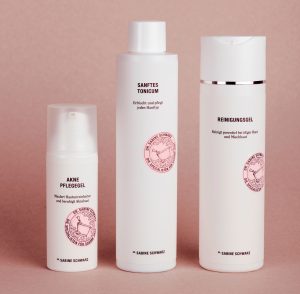Cellulite – harmless but difficult to treat!
Cellulite, orange peel skin, dimples … many names for the same problem! Almost 80% of all women are affected by cellulite. Although it is harmless, many women suffer greatly from it. The cosmetics industry seems to launch a new product against cellulite every day – but what is the benefit, apart from a hole in your wallet?
The sobering answer is that despite various ointments and therapies, cellulite can unfortunately often only be marginally improved. However, many patients already perceive this as a relief which is why I would like to share my tips with you here.
Anyone with cellulite knows that you can suffer quite a bit even from things that do not affect your health. Affected women are often desperate because hardly anything seems to work. Although research is continuously on the ball and new products against cellulite are constantly conquering the market, there still seems to be no cure for it.
However, with combination therapy and a healthy lifestyle, sometimes there is hope for considerable improvements!
Cellulite and its causes
Many women are literally born with cellulite because genetic predispositions play a large part in its development determining the strength of the connective tissue structure.
If the structure of connective tissue is weak by nature other influencing factors can also benefit the development of cellulite including smoking. Nicotine constricts the blood vessels of the skin and throttles the metabolism in these regions, and it also damages the connective tissue.
Lifestyle factors such as too little exercise as a cause of low muscle mass or an unhealthy diet with too much fat and salt also are promoting factors.
Whilst studies have not confirmed a direct connection between cellulite and overweight (slim women can also get it), with weight gain cellulite also increases.
Why are almost only women affected by cellulite?
Since the female connective tissue has significantly thinner connective tissue fibres than the male and these are also arranged differently, the subcutaneous fatty tissue can more easily push its way to the surface in between these. Hence the familiar image of pads (fat cells) next to indents (connective tissue fibres). Women also by nature have more fat cells in their subcutaneous tissue than men.
What sometimes puts an incredible strain on women has important evolutionary reasons. For pregnancy, women’s connective tissue must be more elastic to make room for the baby. So nature has had a plan after all!
As with skin and hair, the female hormone oestrogen also has an important influence on the severity of cellulite. This hormone ensures that depot fat tends to accumulate on the buttocks and thighs of women.
How is cellulite treated?
The most effective way to combat cellulite is to tackle the cause. To do this, it makes sense to know what the cause is. However, since it is hard to find out yourself whether, for example, circulation in the skin is poor, a medical examination is recommended before experimenting with various treatment options.
The best chances of success in the fight against cellulite comes with a combination therapy – here are a few promising ways:
- Reduction of superficial fat cells by fat-away injection or fat-away freezing or liposuction.
- Regeneration of the superficial connective tissue structure by cellulite injection and mesotherapy
- Radiofrequency tightens the deep connective tissue
- Massages, endermology, vacustyler and wraps promote blood and lymph flow (video: treatment with Vacustyler)
- In the case of severe forms of cellulite, local cutting of the retracting connective tissue septa under local anaesthesia
What are the benefits of anti-cellulite creams?
In their desperation, women like to reach for the latest anti-cellulite creams. No wonder, after all, new products come onto the market at regular intervals promising even better effectiveness.
Unfortunately, such creams will improve the skin’s appearance on the surface only slightly. Any effects are also limited in time. The active ingredients used (often ivy, ginkgo or fruit acids) cannot even penetrate into the subcutis, which is where they should actually work. Instead, they only sink in a few millimetres and can hardly make a difference in these superficial skin layers.
Teas, powders and tablets are also frequently offered to “detoxify” or “deacidify”. Although there is no scientific proof for their success, they definitely improve metabolism.
What can you do yourself?
In addition to various dermatological treatments against cellulite, patients often want to find out what they themselves can do to improve their cellulite. An athletic lifestyle combined with a healthy diet can prove a relief.
Special creams and wraps are other options for improving the superficial appearance of cellulite.
Nutrition and Lifestyle
Download (PDF – 155 KB)
Ointments, massages and wraps
Download (PDF – 155 KB)
Yours, Dr. Sabine Schwarz






